3 Things Most People Forget about Baby-Led Weaning
In this episode we're talking about:
- What to expect when starting baby-led weaning and what the journey might look life from 6 months to 12 months
- History of baby-led weaning and the research that supports it
- How your baby can get the nutrients they need while learning how to self-feed
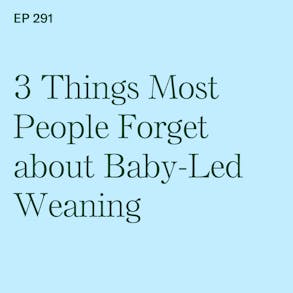
LISTEN TO THIS EPISODE
Episode Description
There are a few things that people forget about baby-led weaning…but your baby can learn to self-feed safely! In this episode we’re looking at 3 things to help you stay in a positive mindset about baby-led weaning so that your baby can be successful at self-feeding when they start solid foods!
Links from this Episode
- Baby-Led Weaning with Katie Ferraro program with the 100 First Foods™ Daily Meal Plan, join here: https://babyledweaning.co/program
- Baby-Led Weaning for Beginners free online workshop with 100 First Foods™ list to all attendees, register here: https://babyledweaning.co/baby-led-weaning-for-beginners

Latest Episodes
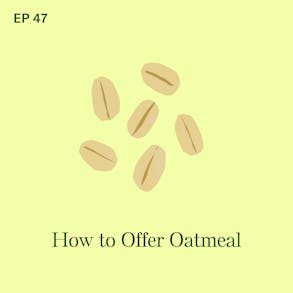

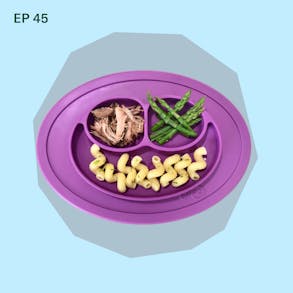
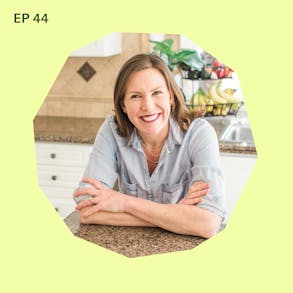
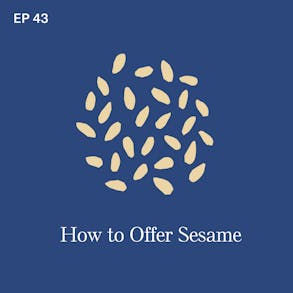
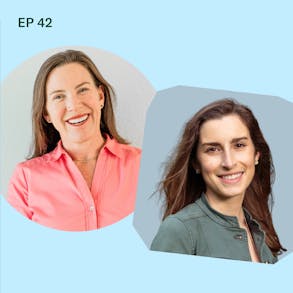
Katie Ferraro (0s):
Checking in real quick about peanuts. Have you guys offered your baby peanut protein yet? Peanuts are one of the big nine allergenic foods. Those are the nine foods that account for about 90% of food allergy. And there's really good data to support early introduction of peanut for babies as a way to lower the risk of peanut allergy. But peanuts are tricky, right? Cuz while there is new data and updated guidelines that show us that babies should be starting peanuts for the most part around six months of age, we know that thick globs of nut butters or intact nuts are choking hazards. My absolute favorite way to offer babies peanuts safely are the Puff Works, baby peanut puffs. So Puff Works are a no stress, low mess, safe way to do peanut in a puff, perfectly shaped for baby led weening. And there's some other puffs out there that I don't love because they have added sugar or salt, which babies shouldn't have.
Katie Ferraro (44s):
But the Puff Works brand are formulated for your infant. They're the softest puff on the market so you can start them even if your baby doesn't have teeth yet and you can get 15% off Puff Works, baby peanut puffs with my affiliate discount code Baby led. That's baby led L e d. If you head to puff works.com and will I know that offering your baby like soft, solid strips of lamb in week one of baby led weening can feel scary. It's also important to know there's a real incredible body of research that supports baby led weening as a safe and effective alternative to traditional spoon feeding. Baby led weening doesn't increase the risk of choking. It doesn't lead to growth faltering, it doesn't lead to nutrient deficiencies. Hey there I'm Katie Ferraro, registered dietician, college nutrition professor and mom of seven specializing in baby led weening here on the baby led weening Made Easy podcast I help you strip out all of the noise and nonsense about feeding, leaving you with the confidence and knowledge you need to give your baby a safe start to solid foods using baby Led Weaning Hey.
Katie Ferraro (1m 48s):
Guys, welcome back. Today I'm doing a really short baby Led Weaning training episode about three Things Most People Forget about Baby Led Weaning. And I like to start these mini BLW training episodes with a BLW tip of the day. And my tip to you is do not stress about how much your baby is eating. Okay? So often it's so easy to be like, oh my gosh, they're not eating anything, they're not getting enough and we stress about the wrong thing. Okay? It doesn't matter how much your baby eats early on in baby-led Weaning because infant milk, breast milk or formula is still going to be your baby's primary source of nutrition. What I want you to focus on is making sure that we're giving our babies enough time and space to learn how to eat right.
Katie Ferraro (2m 30s):
We cannot stress about how much they're eating because that doesn't matter because they don't even know how to eat. The whole point of the Weaning process is to allow our babies ample practice to become proficient at self feeding So that by the time they turn one, they'll be getting most of their nutrition from food. It's a lot of work to do, right? Because when you started at six months of age, they're getting a hundred percent of their nutrition from infant milk that's breast milk or formula. And by the time we get to 12 months, we want most of baby's nutrition coming from food. But you got six months to figure it out. So don't stress about how much that matters and hang tight because in this episode I'm gonna share three things that will help you stay in a positive mindset about starting solid foods. Kind of help you zoom out and see some of the other things that really matter.
Katie Ferraro (3m 10s):
I know as a personal aside, when I was starting Baby Led Weaning, the first time I did it was with my quadruplet So I'd had a singleton. We really struggled with traditional spoon feeding. She hated food, she hated feeding. I felt like she hated me. Then I had quadruples after that and I was like, I can't do this force feeding by spoon thing again. There's got to be a better way. And so we did baby Led Weaning, we were figuring it out. It was messy, it was ugly, there was lots of tears. But I remember when I was getting time to go to their nine month appointment, I remember standing in my kitchen and feeling nervous cuz I knew from my older daughter that they were gonna check her hemoglobin levels. So they were gonna do a heel stick in the office to check her hemoglobin, which would be an indicator of the iron status. And with her, I had been forced feeding iron fortified rice cereal. But then with the quadruplets, I was just letting them learn how to eat foods that naturally contained iron.
Katie Ferraro (3m 53s):
I remember being so nervous to go to their appointment like, what if the iron comes back, then the doctor's gonna think I'm a bad mom because I'm not making them have rice cereal. And long story short, their iron came back perfectly fine. Nobody had iron deficiency. And I remember kind of like the doctor didn't gimme a pat on my back, but I like gave myself a pat on my back like I am doing a good job at this. Right? Your your babies staying on their growth path. If their iron levels are coming back, fine, you guys are doing a great job feeding your baby. But there are a few things that people tend to forget. So let's start with those three things most people tend to forget about. Baby led weening. Number one kind of already alluded to it, baby led weening is a long game. It doesn't happen overnight, right?
Katie Ferraro (4m 35s):
I talk about baby led weening being this six month continuum where we move again from total reliance on infant milk at six months to almost total reliance on food for nutrition at 12 months. Parents like, oh my gosh, that's a lot of things I need to do. But yeah, you get six months to do it. You guys think about how much your baby has already done between zero to six months. You like get that same amount of time to get from six to 12 months and to help your baby make this transition. It does not happen overnight. So please be patient too often. I see families giving up on baby-led weeding usually within the first one or two weeks because you're like, oh, this doesn't work. The baby's not eating enough. What is enough? Okay? There's no hard and fast rules about how much portion size babies should be eating.
Katie Ferraro (5m 14s):
Your baby's getting most of their nutrition from infant milk and they need a lot of time to learn how to eat the other thing, which is solid food. So don't look at other babies on social media, be like, but that baby's eight months of age and they're eating so much better than my baby. Don't compare your baby to your friend's babies. Don't compare your baby to your even your other previous babies. Okay? We say compare and despair. I don't want you guys to do that. Keep in mind number one, baby led weening is a long game. Don't forget that you've got six months to figure this out. The second thing people tend to forget about baby Led Weaning is that baby Led Weaning is developmentally appropriate. It just feels like a new thing, okay? But babies have been doing what we now call baby Led Weaning forever, right? I've interviewed Gill Rapley, the founding philosopher and the pioneer of baby led weening numerous times on this podcast and always of course giving credit where credit is due that Gill Rapley founded the baby led weening as a philosophy.
Katie Ferraro (6m 6s):
But as a practice, we know that for generation and millennia parents have been feeding babies modified versions of the same foods that they eat. Hey, we're gonna take a quick break, but I'll be right back.
Katie Ferraro (7m 25s):
You guys, it's only really since the earlier part of the 20th century when commercial baby food and buying that stuff was even an option. And then the pouches are a really, really, really new advent on the market, okay? These things have not been around for very long. Babies have always eaten modified versions of the same foods their parents eat. We just call it baby led weening now. And we now have a real incredible body of research to support baby led weening as a viable and safe alternative to traditional spoon feeding. And if we look at the research you guys, science shows us that babies who start solid foods with a baby-led approach are at no higher risk of choking than our babies who do traditional spoon feeding. Can we know that there's absolutely no data to support the idea that babies who do BLW have growth faltering?
Katie Ferraro (8m 10s):
Can we also know that they don't have any nutrient deficiencies? So while you might be scared, oh my God, this is like a new woo woo parenting thing, they're not gonna get enough iron. They're gonna choke on foods, they're not gonna gain their weight or get their nutrition. That's not true. This is a totally developmentally appropriate way to honor your baby's inborn ability and desire to self-feed, right? You're all about responsive feeding when it comes to breastfeeding, okay? This is just the extension of that as you move into the next phase of infancy. And if you're bottle feeding as well, you should be interested in responsive feeding and following your baby's cues. And baby led weening allows us to do that in the second half of infancy, which is when babies start solid food. So this is a developmentally appropriate thing for your baby to be doing.
Katie Ferraro (8m 50s):
It's what they were born to do, designed to do. Don't forget it. That's tip number two, All, right? The third thing that most people forget about baby Led Weaning is that Babies can eat so many more foods than we give them credit for, right? If we look at traditionally spoonfed babies, those babies have had at most 10 or 12 different foods by the time they turn one. And what happens when babies turn one is that moving into the second year of life, the vast majority of what are now toddlers will experience some degree of food neophobia or picky eating, okay? And if you lose those 10 or 12 foods that the baby had as a baby to picky eating, that becomes a really challenging child to feed, right? But if your baby has, let's say, a hundred foods under their belt, by the time they turn one and you lose 10 or 12 or 15 of those foods to picky eating, who cares, right?
Katie Ferraro (9m 36s):
You've still got like 85 or 90 foods that your baby will eat. And with baby Led Weaning the number and the types of foods that babies can eat, it's almost infinite. Yes, there are a few foods that we don't feed for nutrition reasons and safety reasons, but I've got a hundred first foods list with a hundred different foods on it that your baby can safely eat. And I'm so excited because this week at the time of recording, I'm working with a new baby where we have gone through with different babies that I work with and taken every single food from the hundred first foods list. We do five new foods a week. So in week one, when we're introducing five new foods, we've now introduced every single one of those foods to a baby in week one. Okay? And the point is just to show parents and other feeding professionals that there are no right or wrong foods to start with.
Katie Ferraro (10m 17s):
Okay? Well we know the wrong ones cuz we wanna stay away from the unsafe ones. But that there are a hundred different foods that you could try in week one of baby led weening and make them safe for babies to learn how to eat. And so, because most parents give up in week one or week two, I wanna make sure that you guys are moving beyond that. Okay? The key with making baby led weening work is to achieve what we call diet diversity. And I think the best way to achieve diet diversity is to get your baby to eat a hundred foods before they turn one. Hey, we're gonna take a quick break, but I'll be right back.
Katie Ferraro (12m 8s):
So back in 2016, I created the 101st foods approach to baby led weening. So my original hundred first foods program has helped tens of thousands of families give their babies a safe start to solid foods. And if you don't have a copy of my hundred first foods list yet, I give it away to everybody on my free online workshop called Baby led weening for BEGINNERS. This is a video workshop, it's a video training cuz I know you guys like podcasts, but like seeing, really is believing with baby led weening. And with this workshop, I just recently redid the whole thing. So it's an hour-ish, it goes a little bit over an hour. I also do a q and a at the end. I make a point to answer all of your questions by email if I didn't answer them in the workshop.
Katie Ferraro (12m 49s):
So it's a great place to learn if you're just trying to figure out what does baby led look like? What foods should I be feeding? How can I do the first 10 days using that five step feeding framework, which foods should I not feed? And how do I safely introduce allergenic Foods? Plus again, everyone on that workshop gets a copy of the hundred first Foods list because I never wanna see you guys run out of ideas of foods for your baby to eat. You can sign up for this week's workshop times if you go to baby Led Weaning dot co. Again, head to baby led weening dot co to Get your copy of the hundred first Foods list. And I'll summarize it again. But don't forget these three things about baby led weening guys. Number one, baby led weening is a long game. Your baby needs a lot of time to practice learning how to eat. It's your job to give them that opportunity to practice.
Katie Ferraro (13m 30s):
Number two, baby led weening is developmentally appropriate. This is a generation's old approach to helping babies learn to eat modified versions of the same foods that babies have. We just now in the modern era have lots of data to support baby Led Weaning as a way to help babies achieve their nutrition status. We know it doesn't lead to growth faltering, it doesn't lead to nutrient deficiencies, and baby Led Weaning does not increase their risk of choking. The third thing, baby Led Weaning babies can eat so many more foods than we give them credit for. Don't you forget it. Grab that hundred first foods list at baby led weening dot co and happy feeding.

The Program Baby-Led Weaning with Katie Ferraro
A step-by-step digital program for starting solid foods safely and navigating the original 100 FIRST FOODS™ meal plan with baby-led weaning.
 EXPERT-LED, PROVEN APPROACH TO EATING REAL FOOD
EXPERT-LED, PROVEN APPROACH TO EATING REAL FOOD CONCISE VIDEO TRAININGS TO MASTER BABY-LED WEANING
CONCISE VIDEO TRAININGS TO MASTER BABY-LED WEANING 100 FIRST FOODS DAILY MEAL PLAN WITH FOOD PREP VIDEOS
100 FIRST FOODS DAILY MEAL PLAN WITH FOOD PREP VIDEOS
Baby-Led Weaning for Beginners Free Workshop
Is your baby ready to start solid foods, but you’re not sure where to start? Get ready to give your baby a solid foundation to a lifetime of loving real food…even if you’re feeling overwhelmed or confused about this next stage of infant feeding.
Get baby-led weaning recipes and tips delivered to your email inbox.

